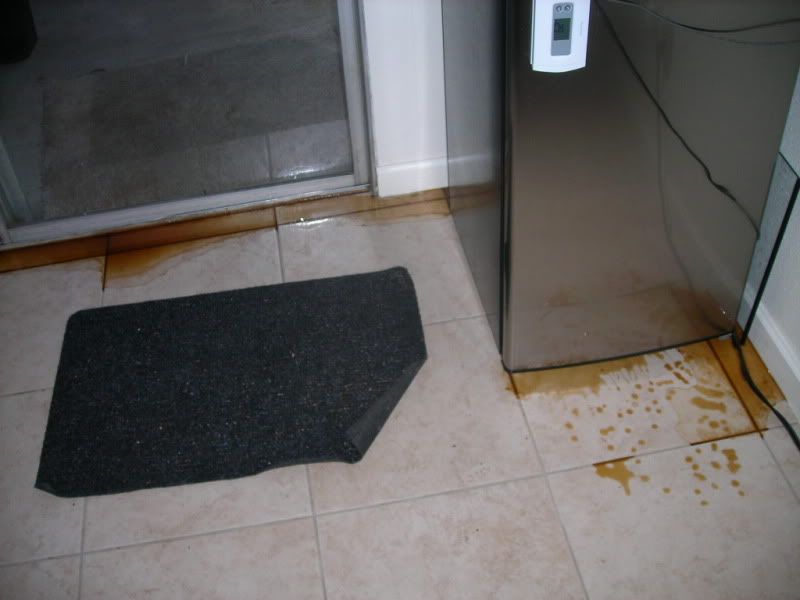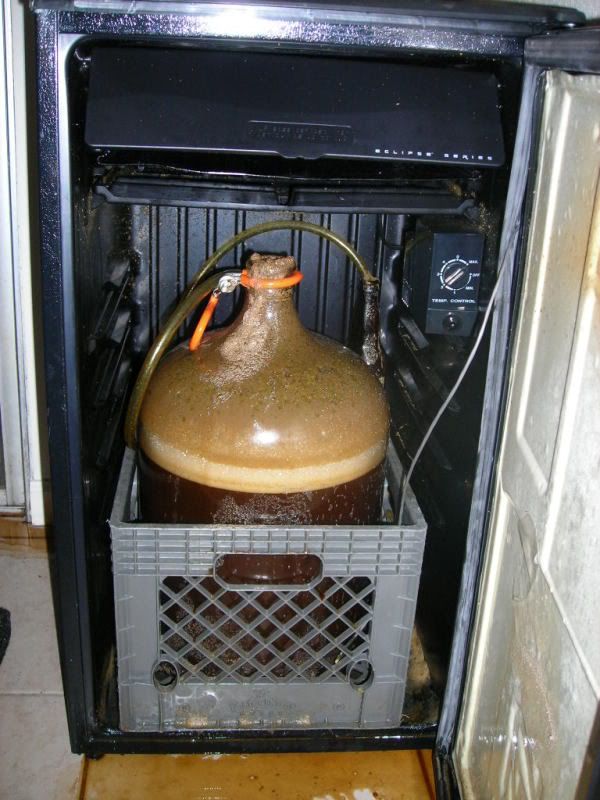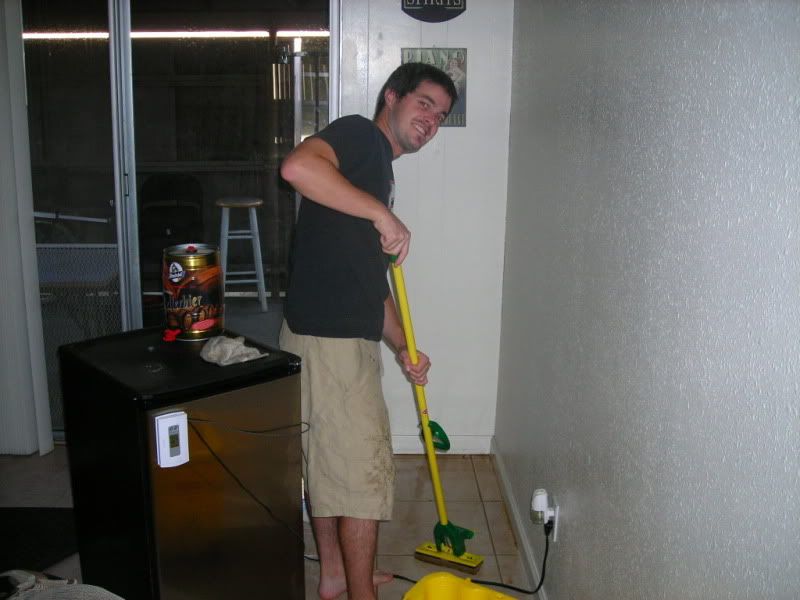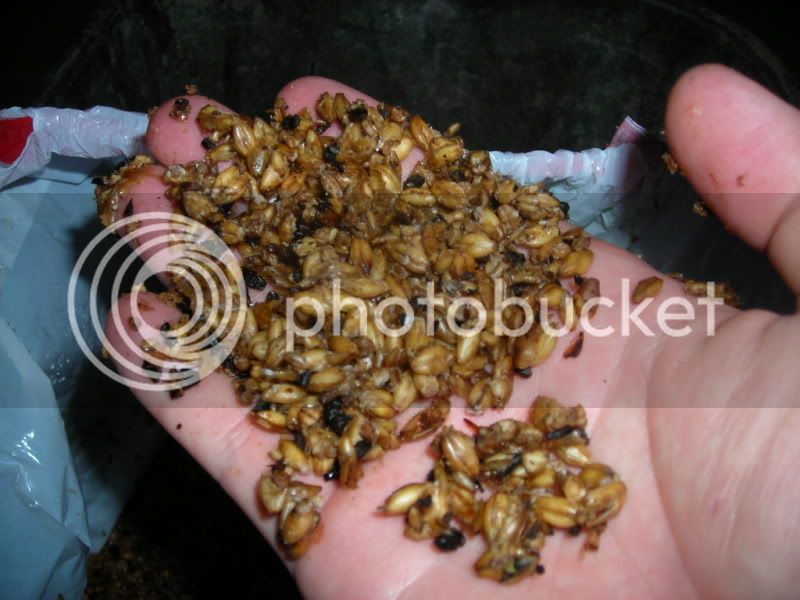rainingbullets
Well-Known Member
- Joined
- Mar 1, 2009
- Messages
- 54
- Reaction score
- 0
Hi all. It's been a long time since my last brew (had to live with the parents for awhile, but that's another story...)
I put together EdWort's Robust Porter recipe. Here it is from BeerSmith:
Type: All Grain
Date: 3/27/2010
Batch Size: 5.00 gal
Brewer: Frosty
Boil Size: 6.41 gal Asst Brewer:
Boil Time: 60 min Equipment: Brew Pot (7.5 gal) and Igloo Cooler (10 Gal)
Taste Rating(out of 50): 35.0 Brewhouse Efficiency: 67.00
Taste Notes:
Ingredients
Amount Item Type % or IBU
11.00 lb Pale Malt (2 Row) US (2.0 SRM) Grain 80.00 %
1.00 lb Caramel/Crystal Malt - 40L (40.0 SRM) Grain 7.27 %
1.00 lb Chocolate Malt (350.0 SRM) Grain 7.27 %
0.50 lb Barley, Flaked (1.7 SRM) Grain 3.64 %
0.25 lb Black (Patent) Malt (500.0 SRM) Grain 1.82 %
1.00 oz Northern Brewer [8.50 %] (60 min) Hops 27.8 IBU
0.50 oz Cascade [5.50 %] (60 min) Hops 9.0 IBU
0.33 tsp Irish Moss (Boil 50.0 min) Misc
8.00 oz Malto-Dextrine (Boil 20.0 min) Misc
1 Pkgs Nottingham (Danstar #-) Yeast-Ale
Beer Profile
Est Original Gravity: 1.065 SG
Measured Original Gravity: 1.048 SG
Est Final Gravity: 1.015 SG Measured Final Gravity: 1.016 SG
Estimated Alcohol by Vol: 6.45 % Actual Alcohol by Vol: 4.17 %
Bitterness: 36.8 IBU Calories: 215 cal/pint
Est Color: 36.9 SRM Color: Color
I recently decided to go fly sparge, from my usual batch sparging. I rigged up this "manifold" with some extra copper tubing:
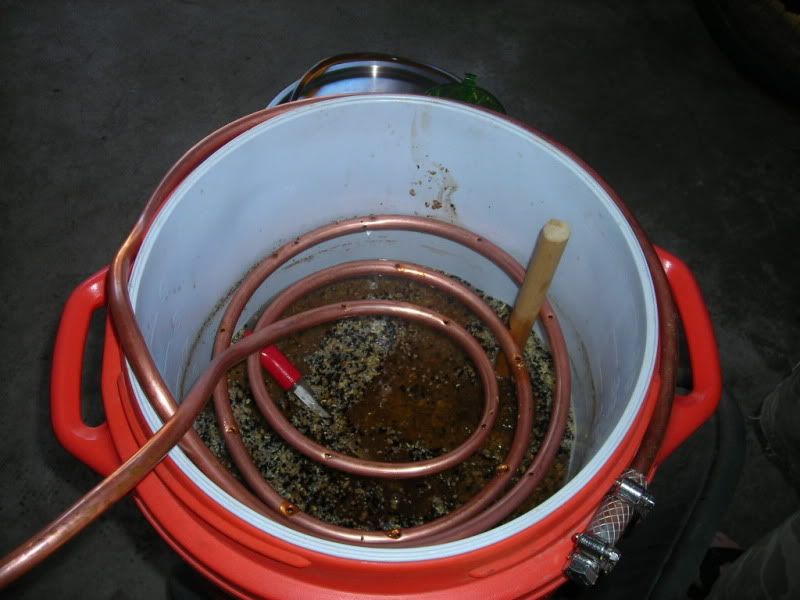
Not the best looking thing out there, but it seems to work (or at least I thought)
At the bottom of my mash tun I have a metal braid setup like so:
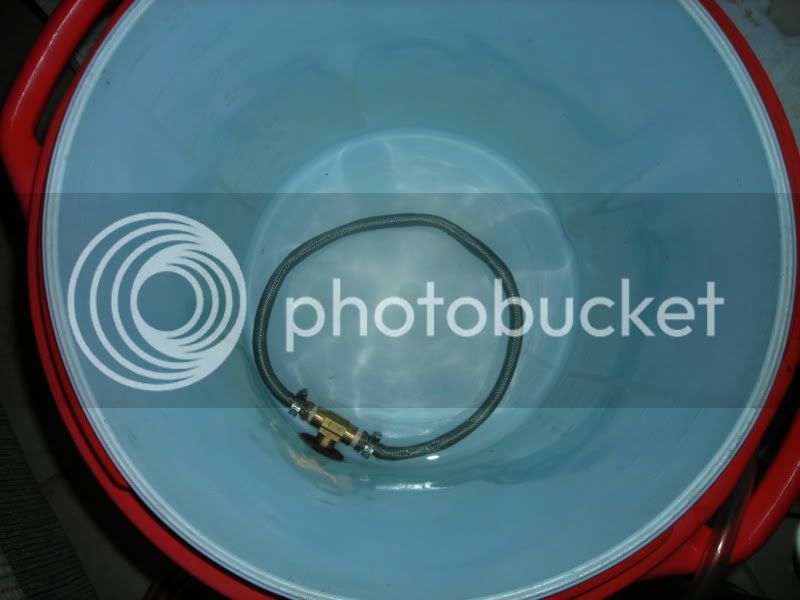
So for my first temp step, I ran about 1.25qt/lb water and hit my 150F target on the money. I let it sit for about an hour, then started the fly sparge with ~170F water. Using as slow flow as I could get, took me about 45 - 60 mins to get my 6.5 gallons of wort.
Here's my ghetto setup in action (neighbors thought I was cooking meth HAH!)
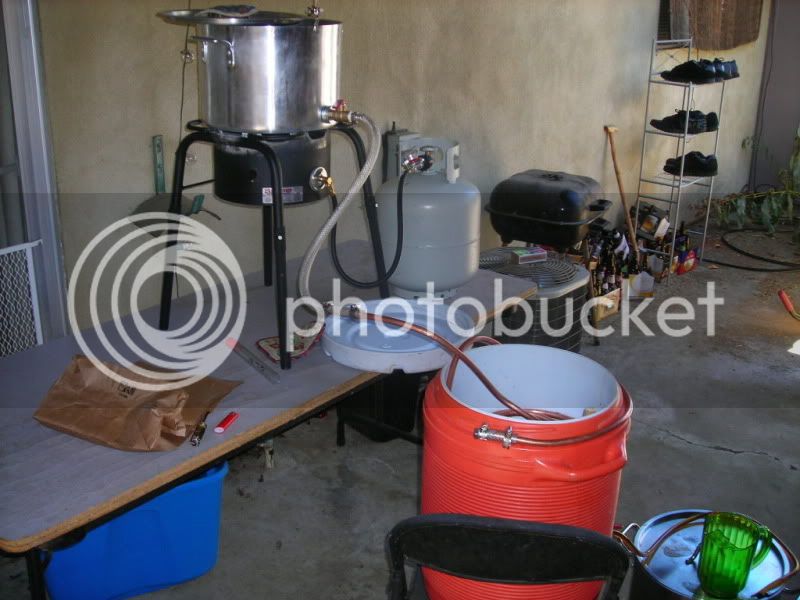
So once I had my boil kickin, I took a pre-boil sample to measure the gravity. Cooled it to 60F, and I was expecting to see about 1.055 (I've made this recipe before..delish!) To my dismay, I saw 1.022 on the hydrometer. WHAT THE FUNK? I thought my hydrometer was cracked or something. Measured some water...sure enough, 1.000
It tasted like wort, but not as sweet as I would expect. Why the hell is the gravity so damn low?
I decided to go on with my procedure (probably wrong move). After boiling off about a gallon after an hour, and adding the malto-dextrine, the gravity was at 1.044. Still pretty freakin low.
I'm blown away at this lousy efficiency. BeerSmith put it at 30%, and I'm pretty sure it was laughing at me.
What have I done to angry the beer gods? My only thought is a lousy grain crush. This was my first time at the LHBS in this town.
Maybe I could have poured some of the wort back into the MLT at a different temperature?
Thoughts? Jeers? Thanks!
I put together EdWort's Robust Porter recipe. Here it is from BeerSmith:
Type: All Grain
Date: 3/27/2010
Batch Size: 5.00 gal
Brewer: Frosty
Boil Size: 6.41 gal Asst Brewer:
Boil Time: 60 min Equipment: Brew Pot (7.5 gal) and Igloo Cooler (10 Gal)
Taste Rating(out of 50): 35.0 Brewhouse Efficiency: 67.00
Taste Notes:
Ingredients
Amount Item Type % or IBU
11.00 lb Pale Malt (2 Row) US (2.0 SRM) Grain 80.00 %
1.00 lb Caramel/Crystal Malt - 40L (40.0 SRM) Grain 7.27 %
1.00 lb Chocolate Malt (350.0 SRM) Grain 7.27 %
0.50 lb Barley, Flaked (1.7 SRM) Grain 3.64 %
0.25 lb Black (Patent) Malt (500.0 SRM) Grain 1.82 %
1.00 oz Northern Brewer [8.50 %] (60 min) Hops 27.8 IBU
0.50 oz Cascade [5.50 %] (60 min) Hops 9.0 IBU
0.33 tsp Irish Moss (Boil 50.0 min) Misc
8.00 oz Malto-Dextrine (Boil 20.0 min) Misc
1 Pkgs Nottingham (Danstar #-) Yeast-Ale
Beer Profile
Est Original Gravity: 1.065 SG
Measured Original Gravity: 1.048 SG
Est Final Gravity: 1.015 SG Measured Final Gravity: 1.016 SG
Estimated Alcohol by Vol: 6.45 % Actual Alcohol by Vol: 4.17 %
Bitterness: 36.8 IBU Calories: 215 cal/pint
Est Color: 36.9 SRM Color: Color
I recently decided to go fly sparge, from my usual batch sparging. I rigged up this "manifold" with some extra copper tubing:

Not the best looking thing out there, but it seems to work (or at least I thought)
At the bottom of my mash tun I have a metal braid setup like so:

So for my first temp step, I ran about 1.25qt/lb water and hit my 150F target on the money. I let it sit for about an hour, then started the fly sparge with ~170F water. Using as slow flow as I could get, took me about 45 - 60 mins to get my 6.5 gallons of wort.
Here's my ghetto setup in action (neighbors thought I was cooking meth HAH!)

So once I had my boil kickin, I took a pre-boil sample to measure the gravity. Cooled it to 60F, and I was expecting to see about 1.055 (I've made this recipe before..delish!) To my dismay, I saw 1.022 on the hydrometer. WHAT THE FUNK? I thought my hydrometer was cracked or something. Measured some water...sure enough, 1.000
It tasted like wort, but not as sweet as I would expect. Why the hell is the gravity so damn low?
I decided to go on with my procedure (probably wrong move). After boiling off about a gallon after an hour, and adding the malto-dextrine, the gravity was at 1.044. Still pretty freakin low.
I'm blown away at this lousy efficiency. BeerSmith put it at 30%, and I'm pretty sure it was laughing at me.
What have I done to angry the beer gods? My only thought is a lousy grain crush. This was my first time at the LHBS in this town.
Maybe I could have poured some of the wort back into the MLT at a different temperature?
Thoughts? Jeers? Thanks!









































![Craft A Brew - Safale BE-256 Yeast - Fermentis - Belgian Ale Dry Yeast - For Belgian & Strong Ales - Ingredients for Home Brewing - Beer Making Supplies - [3 Pack]](https://m.media-amazon.com/images/I/51bcKEwQmWL._SL500_.jpg)
















